While this writing is occurring in the winter of 2014 and my visit occurred on a hot August day in 2013, I choose to mix “in the past” and “current” times in this writing because I can and I don’t care if it not correct grammar or style. Today’s visit is to Worcester Institutional District, which is roughly anchored by the Worcester Court House and Worcerster Memorial Hall, two pretty well known buildings for folks that live in the area.
This particular area dates back to the 17th century (1600’s), pretty old from US standards, with mills and a wooden fort the primary buildings in the area. One prominent person, Stephen Salisbury I purchased most of the surrounding land. He was a successful merchant for the times and his son Stephen Salisbury II inherited his estate, which then flowed to Stephen Saiisbury III, whom donated or sold much of the family land to various organizations that built up the area. His most notable of his donations was the land for the Worcester Art Museum. One other person of importance was Judge William Jennison who donated the land for the Worcester County Courthouse in 1732. None of the buildings are really that old with the oldest dating back to the 1840’s.
The Worcester County Courthouse was built between 1843 and 1845, had some additions in 1878. The front had a major facelift in 1898-99. The site the courthouse sits on has been the county seat dating back to 1731. Today the cases have been transferred to downtown leaving this building pretty much unoccupied.
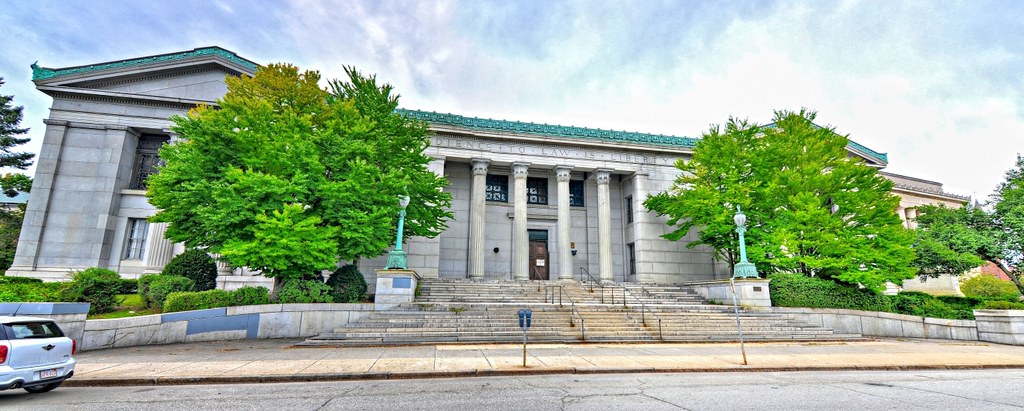
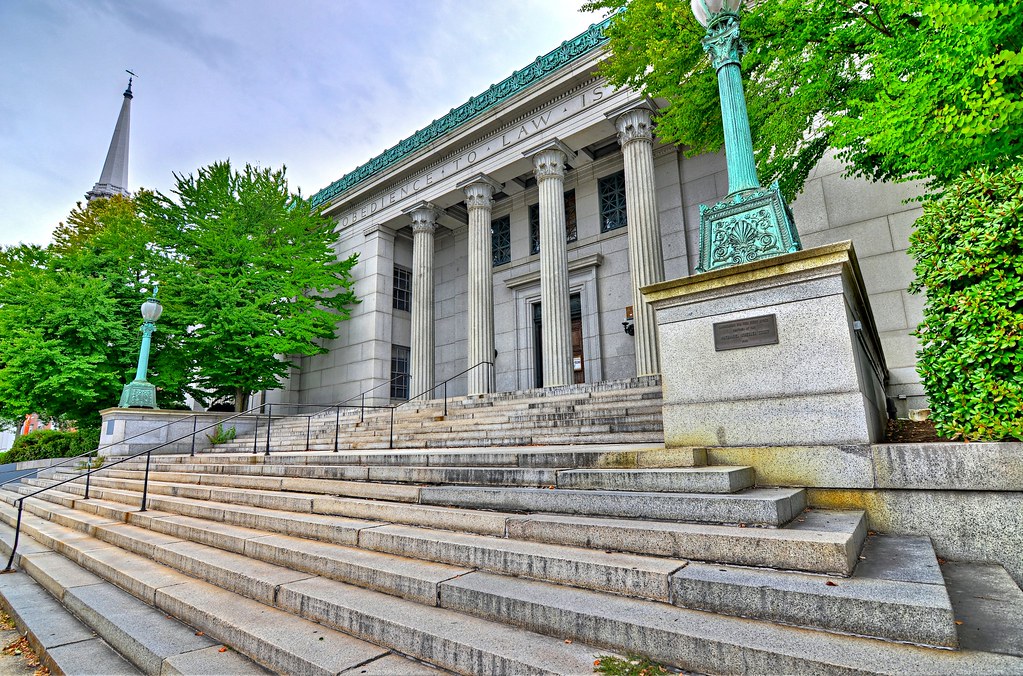

Take a look at the underside of General Devens horse. Someone had some fun with paint or something or was it artistic enhancements. Let me assure you it was not photo magic on my part.
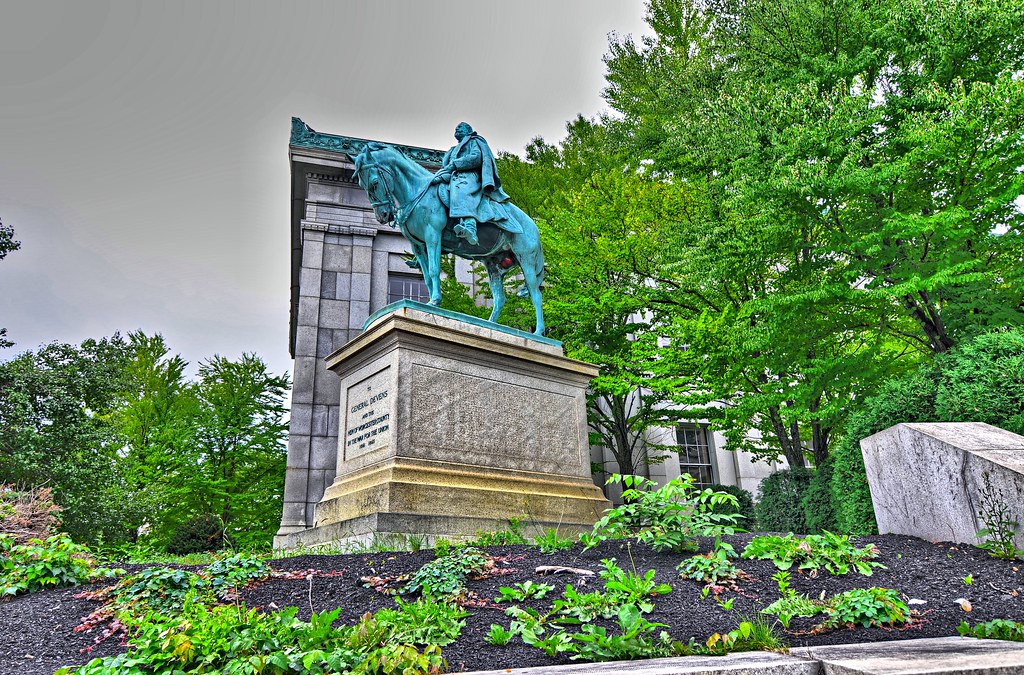
Right down the street from the court house is Worcester War Memorial Auditorium. This is really in the heart of the institution district. This was built in 1932/32 time period. It sits upon a pedestal of Deer Island (the one in Maine) granite complimented with Indiana limestone uptop. The bas relief reflected the Art Deco style. It was built as a memorial to those who served in WWI. Today it lies vacant just like the court house. You can see the auditorium and the Worcester Boys' Club in the background.
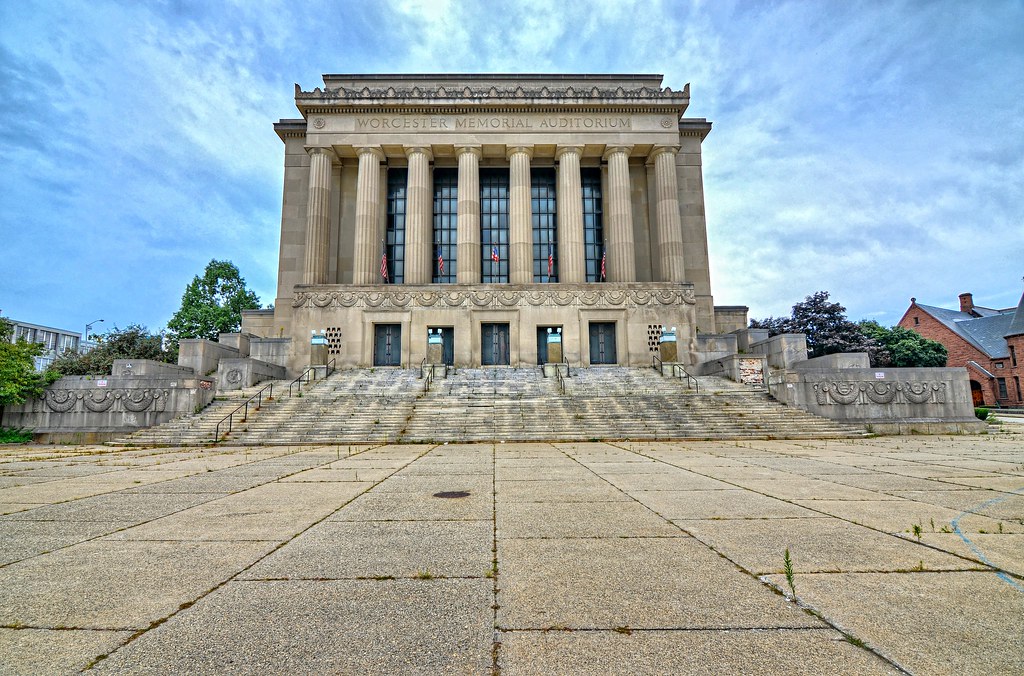
Right across the street is the Worcester War Memorial. This was built in 1935 to honor those in WWI like the auditorium. Whats neat about this memorial is the semi circular granite bench with has bas reliefs and inscriptions of the major battles during the war. I am unclear what the status of this building is today.
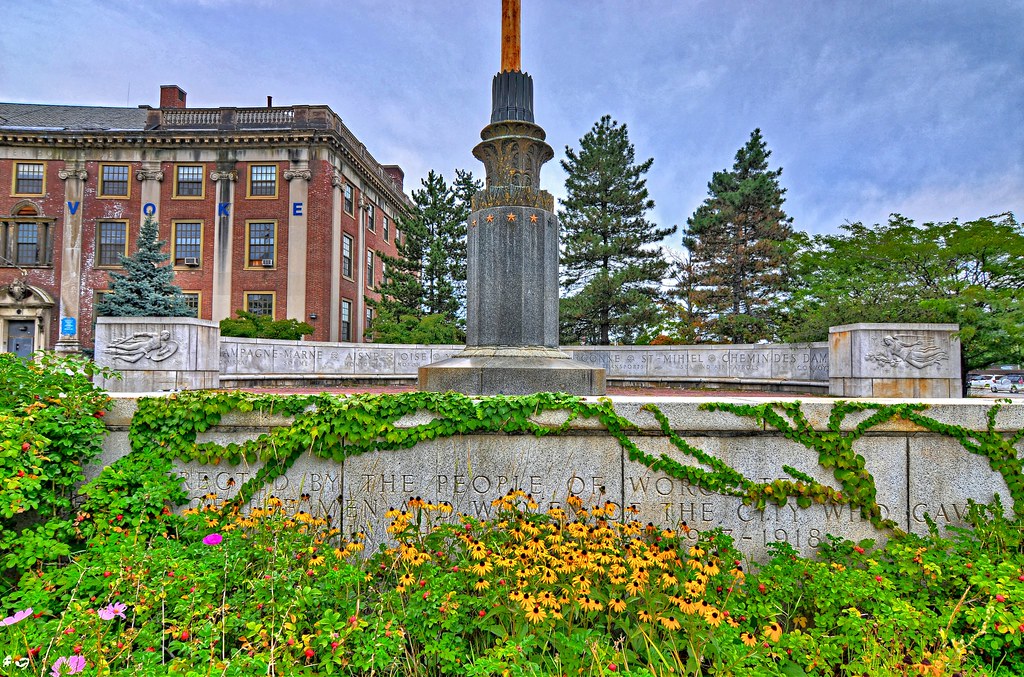


Right next to the War Memorial is the Worcester Boys' CLub that was built in 1928-30. It is a Georgian Revival brick building and it façade is a concave curve. The curve is the same as the street it faces. The front entrance is very elaborate, almost over the top. I wonder what the boys thought as they entered the building.
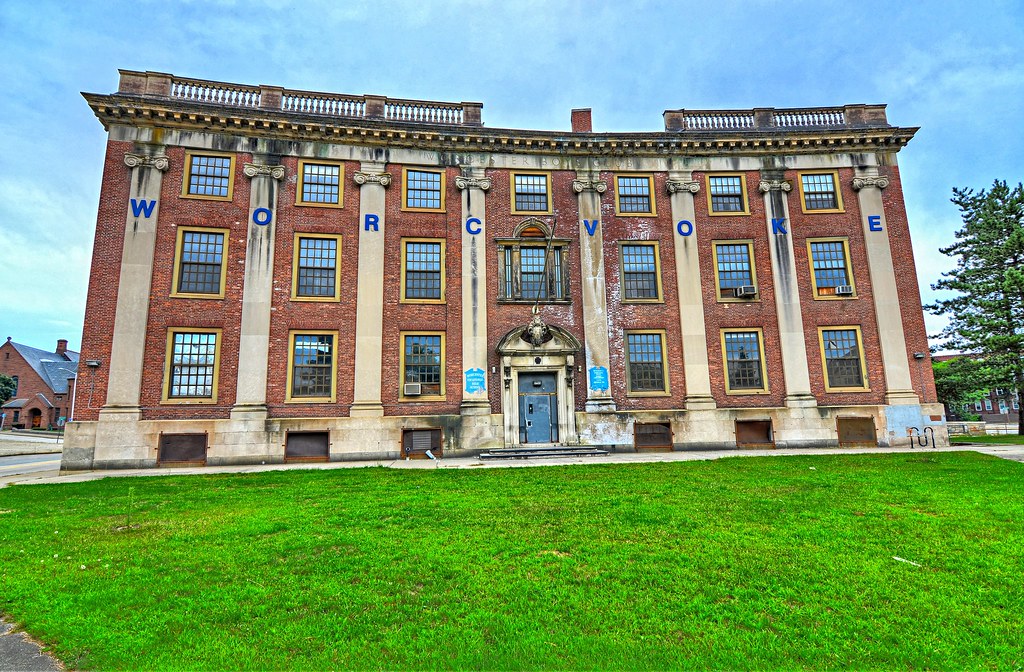
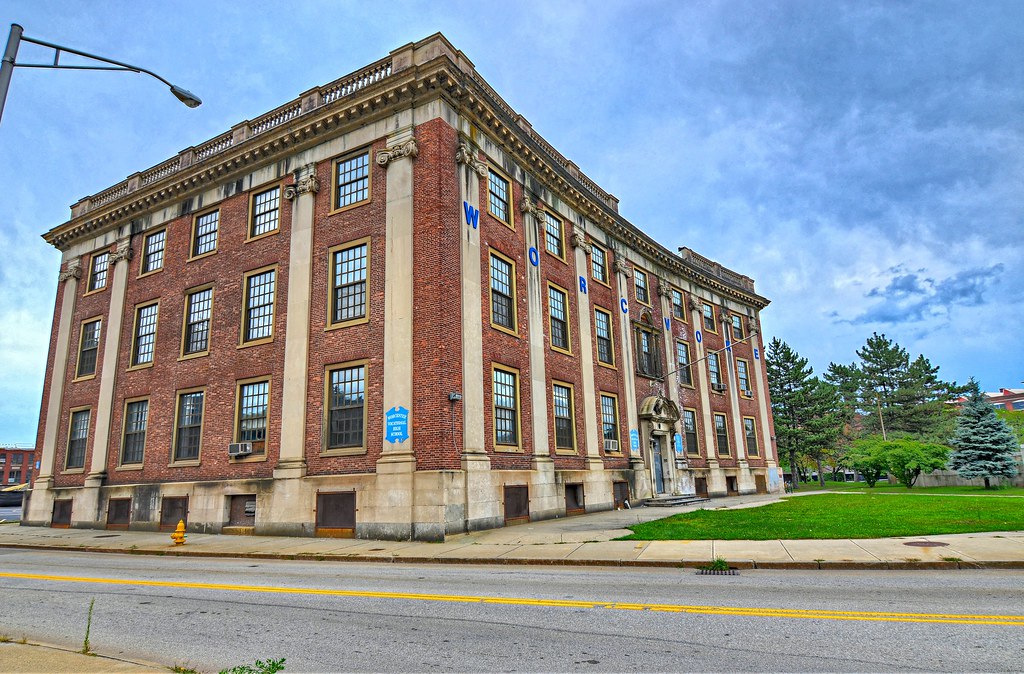
As you head up Grove St you will find Central Church on your right. This will built in 1884-85 on land purchased from Stephen Salisbury III ( you will hear that name a lot around here ). It is a perfect example of Romanesque Revival architecture, constructed of Longmeadow limestone, which I don't have a clue where Longmeadow is. The church was the Central Congregational Society church that got together in 1820. They built their first church on Main St and then this one in 1884. One of these days I will go back to hopefully photograph that great Rosetta Stain Glass window, which was made by Sarah Lyman Whitman.
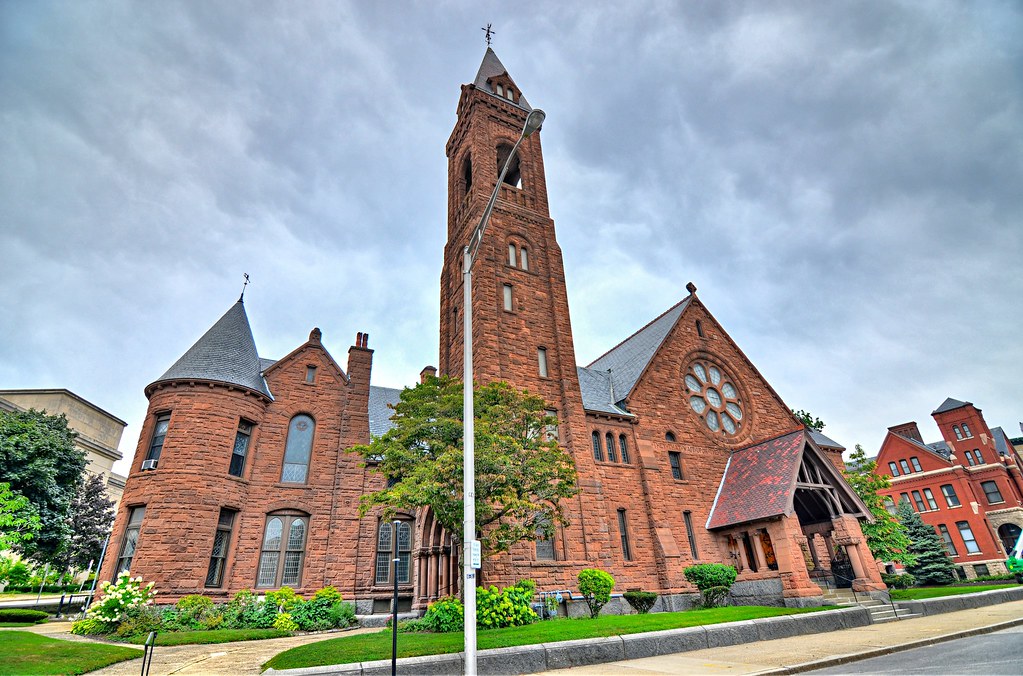
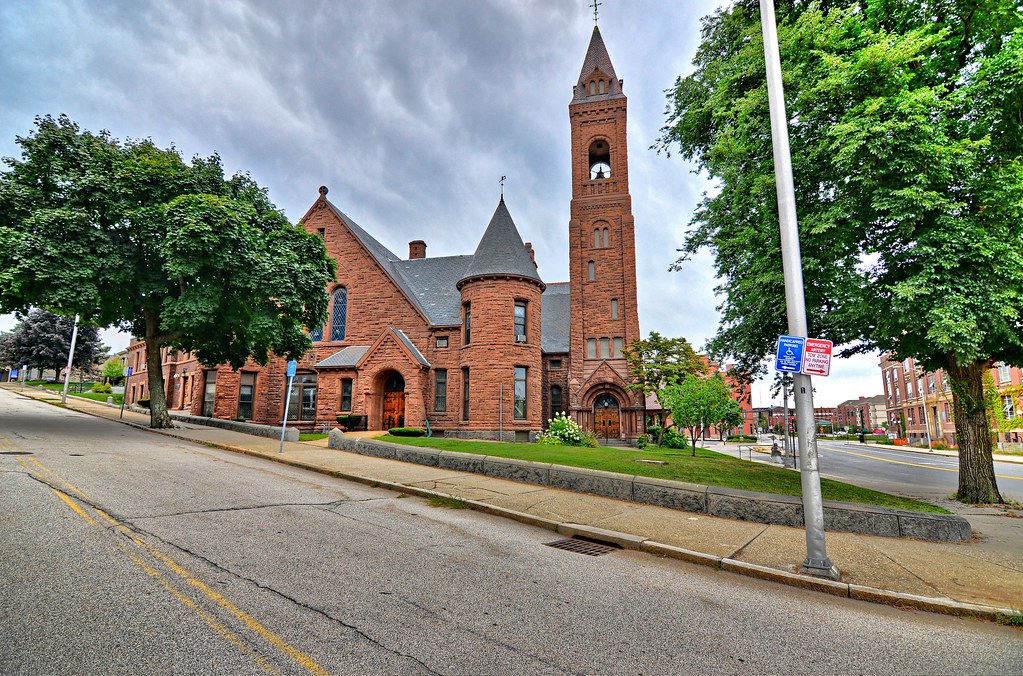
Right next to the church is the Worcester Historical Society (historically speaking) built between 1890 and 91. It is also Romanesque Revival in style, but I don't think there is an architectural connection between with the church. Today I think this place is a plastic surgeon joint.

Right next store is the Worcester Woman's Club. This building really sticks out compared to the rest of the structure in the area because of the shape, color of the bricks and the corner turrets. It was designed by one of America's earliest woman architects, Josephine Wright Chapman. It was built in 1902 with land donated by Stephen Salisbury III. At the peak of participation in the club, membership was limited to 750. Today it is the home to the Worcester Symphony Orchestra and the name of the building was changes to Tuckerman Hall.
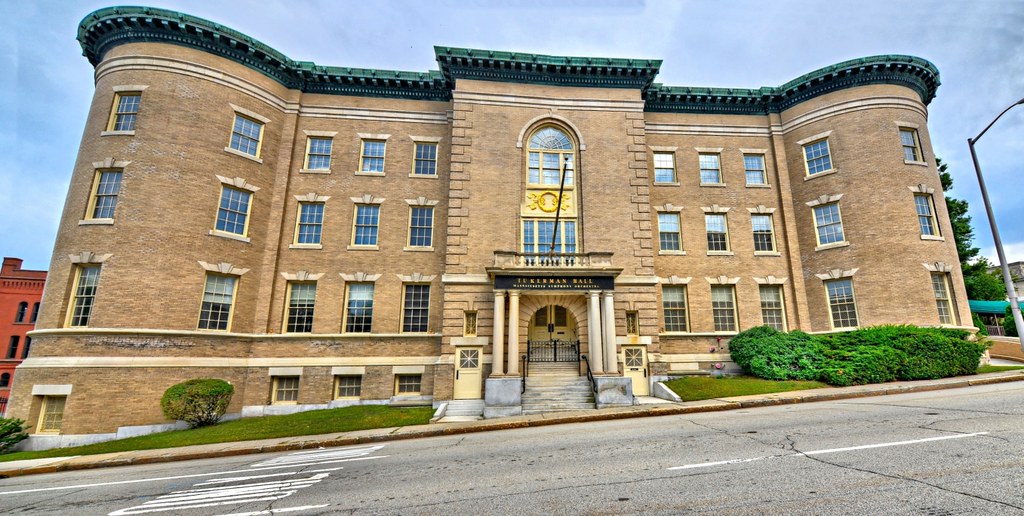
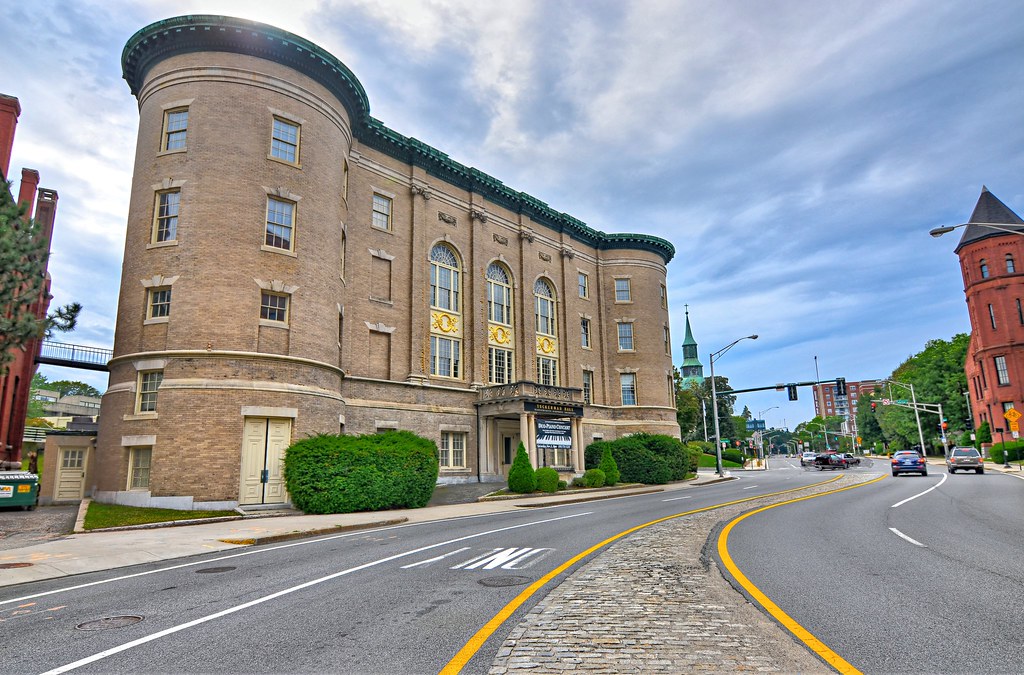
Right across Salisbury St is the Worcester National Guard built in 1889-90. It also has flavors of Romanesque Revival traits. Most striking is the fortress like looks, which I am sure was intended by the architects. If was first occupied by the First Field Artillery of the Massachusetts militia. With the approach of WWI the armory was purchased by the Commonwealth of Massachusetts from the City of Worcester. It has a great front door with nice detail.
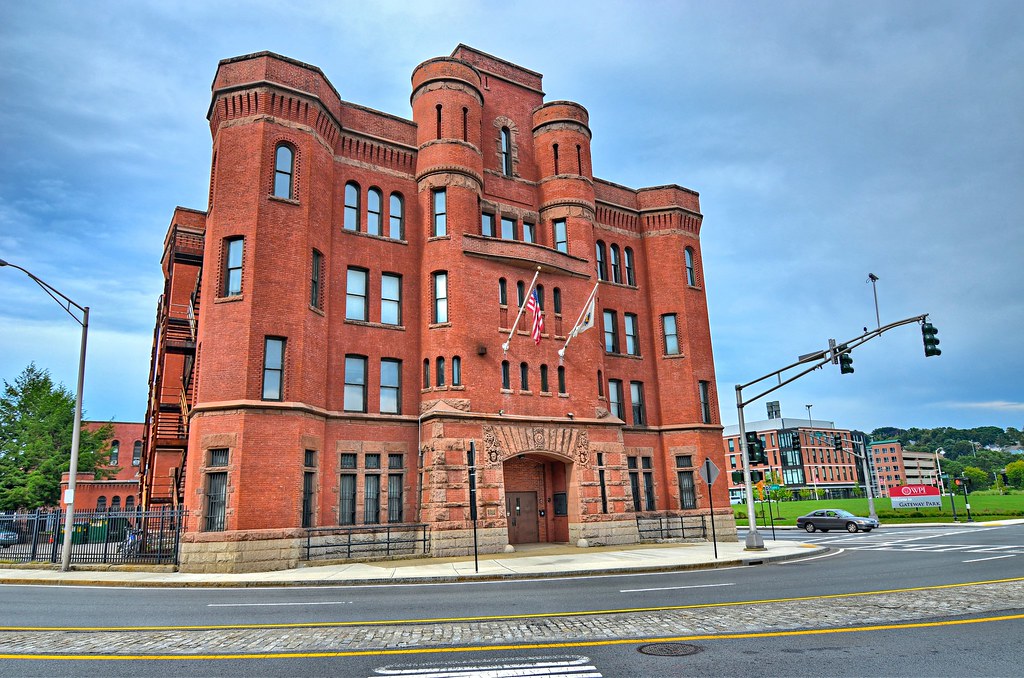
As we move up Salisbury Street, the next place is North High School, which is actually 2 buildings. The Romanesque Revival looking one was built in 1889. It was originally a grammar school until 1911 and then converted over to North High School. In 1915 the more plain looking building was added. Both building are true to their original construction. Both buildings are condominiums today.
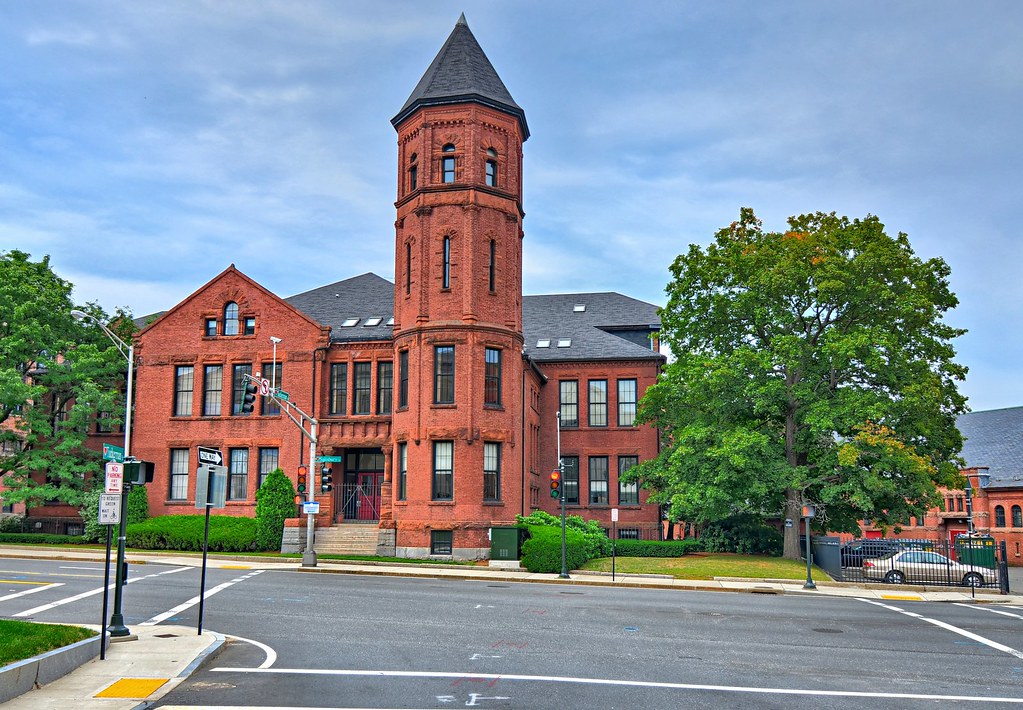
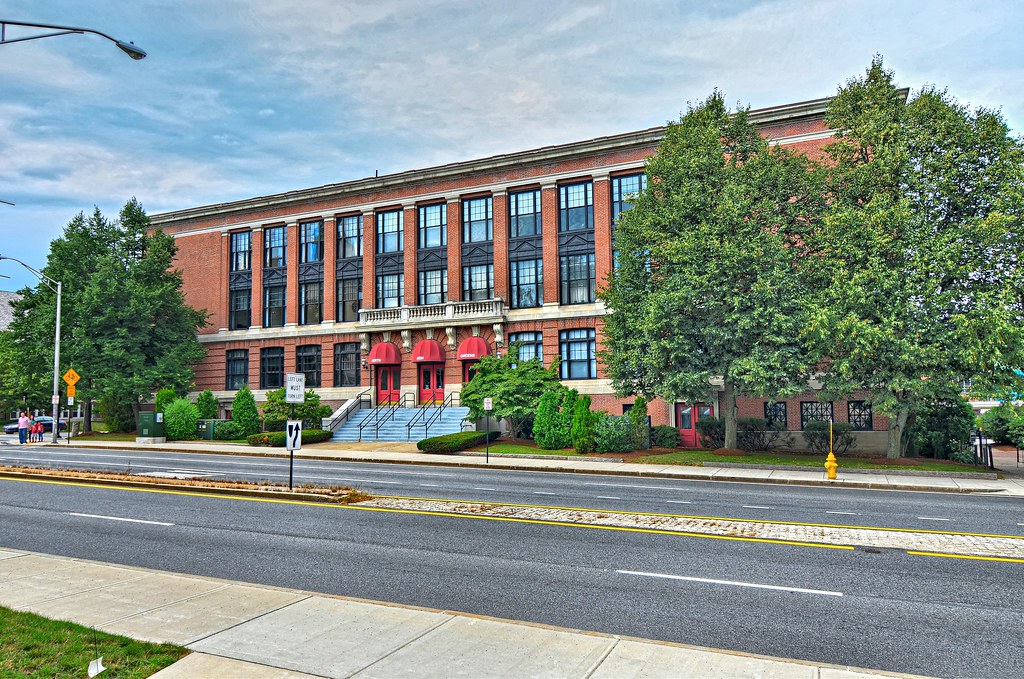
Across the street is the Worcester Art Museum, which has gone thru many alterations over its life. The original building which you can't see from the front was built in 1887, which an addition in 1921, a facelift in 1933 (which is the front view you see today) and then a more modern day addition in 1970. If you look at the side picture where the boy in a sailor suit in the bricked window with the palladian top, that section is the original museum. The museum was founded by Stephen Salisbury III (there's that name again) who made the original gift of land and a fund.
The day I was out taking these pics, I entered the museum and found out during August it was free to visit. There were a lot of oil paintings of historic folks and scenes which were nice, but I don't know enough about this stuff to really appreciate them, other than they are really old. In the next section was a more modern abstract, colorful, and more to my liking prints, paintings or sculptures. There was one of a Campbell Soup Can that rang Andy Warhol to me. The most outstanding exhibit and one that I spent about an hour at was Garry Winogrand "Women are Beautiful" exhibit. In my terms these were simple street photos of women doing what they do every day. They photo's were B&W and really quite effective. They must have been good, because I would stop and just look at the photos, coming up with all sorts of imaginative stuff.
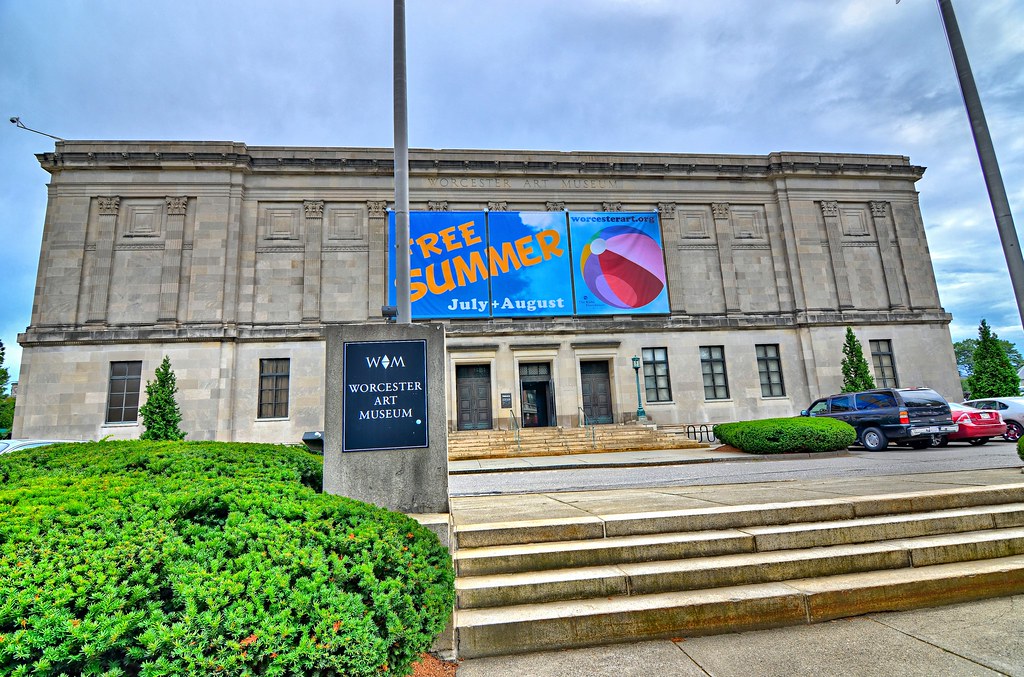
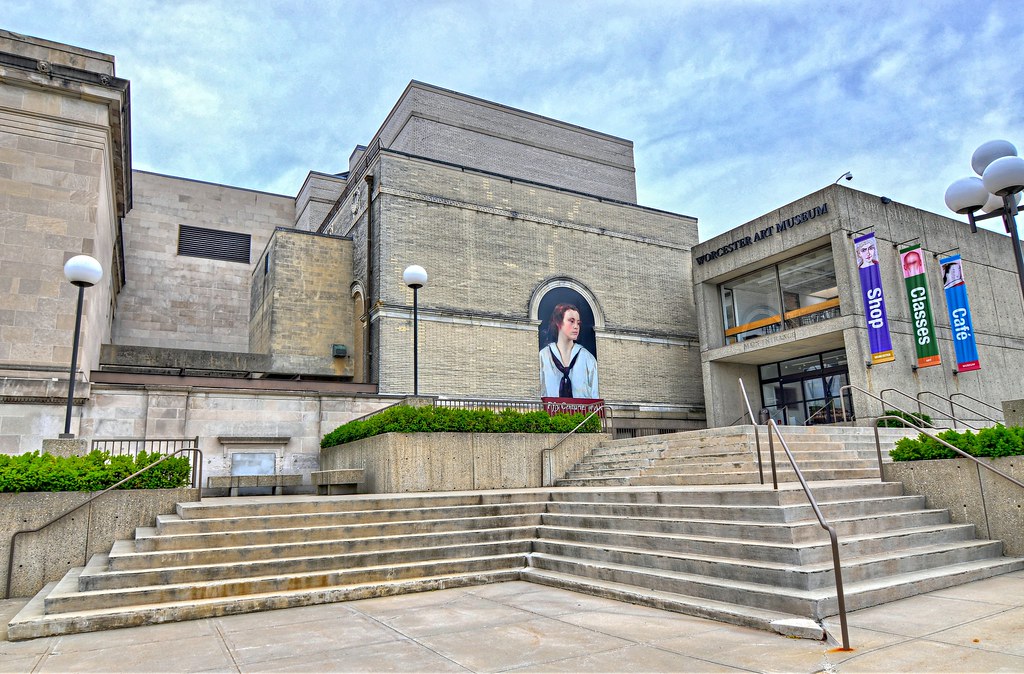
This is a picture of the area just after you walk into the museum from Salisbury St. The mosaic on the floor is an ancient Roman mosaic from Antioch and is supposedly one of the largest and finest examples of its kind. If you have a couple of hours, check this place out.
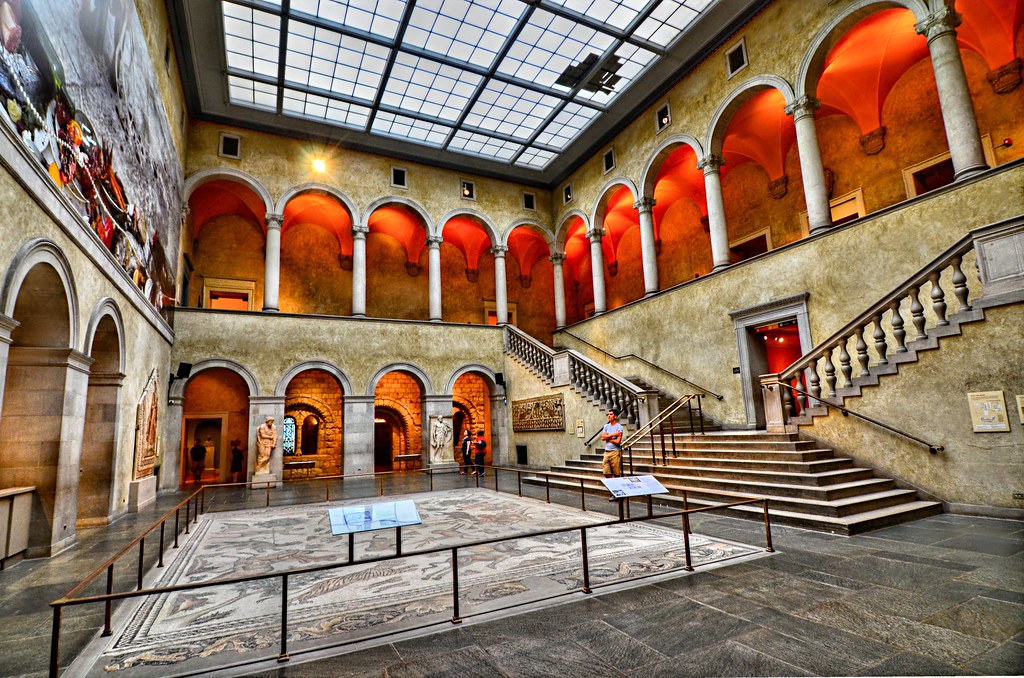
Over the last couple of years I have been slowly visiting all of the Worcester historical hotspots. Institutional Historic District or locally known as Lincoln and Armory Square goes undetected everyday as we drive on Main Street or Highland St on our way someplace else. It is under appreciated at least. If you are here, hopefully I have raised your appreciation just a little bit. If you are more of an aficionado on Worcester History, I realize I have missed one of the buildings and will be heading back out to visit it in the very near future. It's the CDO in me.
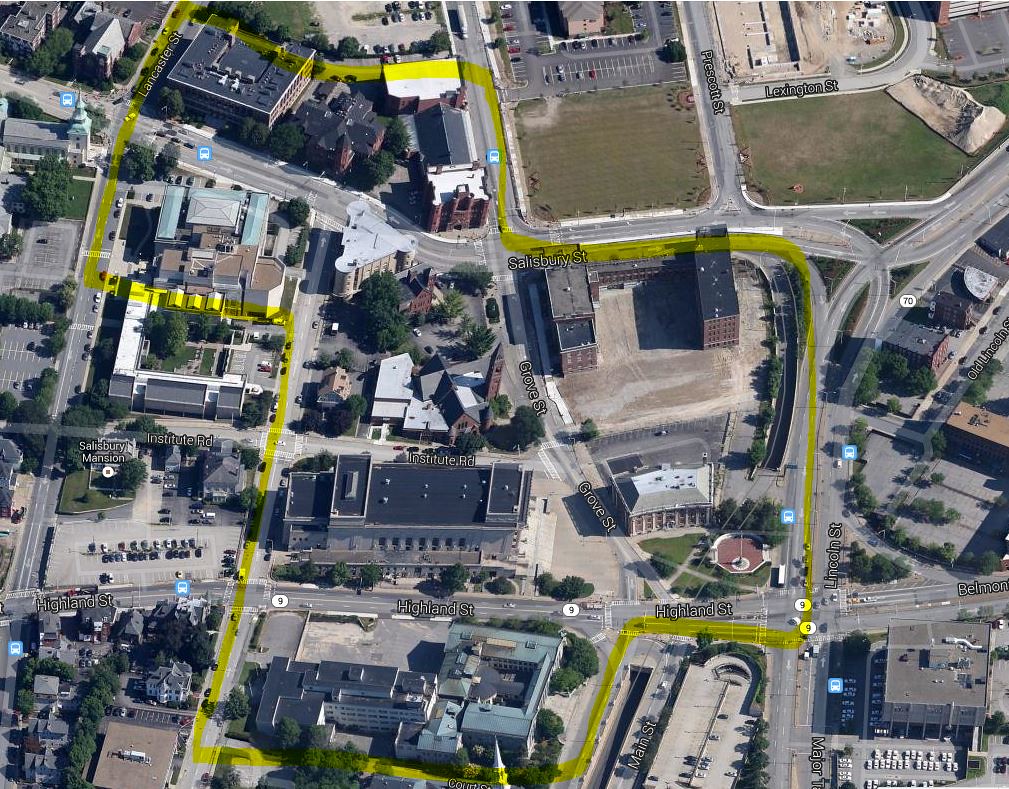

1 comment:
Stunning thank you
Post a Comment